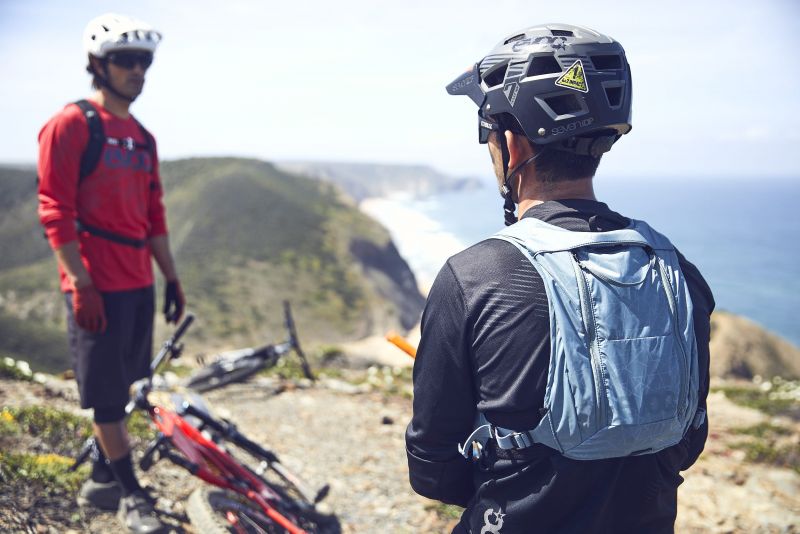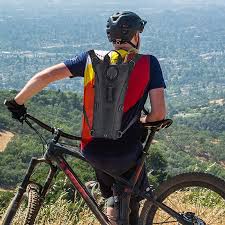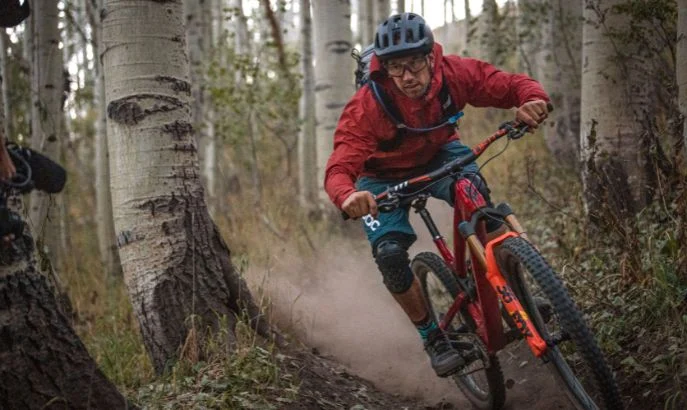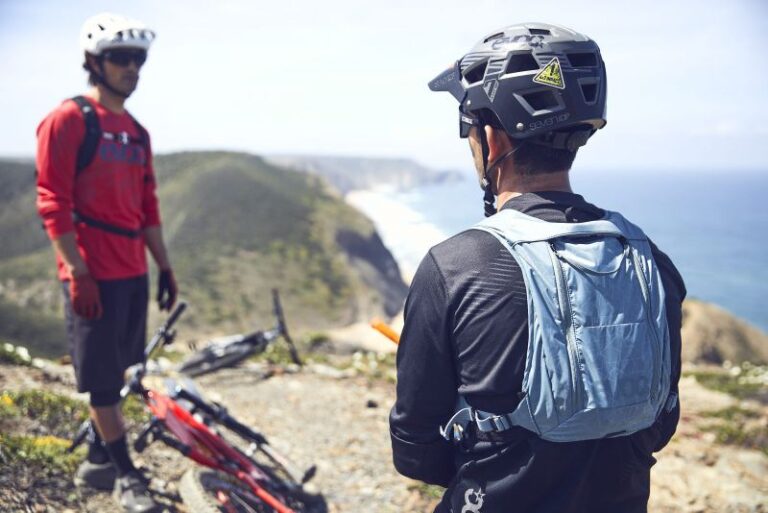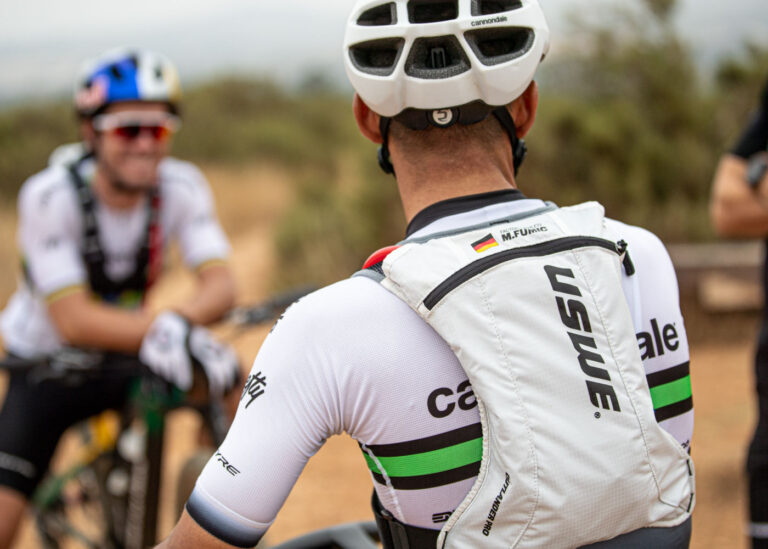Choosing The Right Hydration Pack for Cyclists
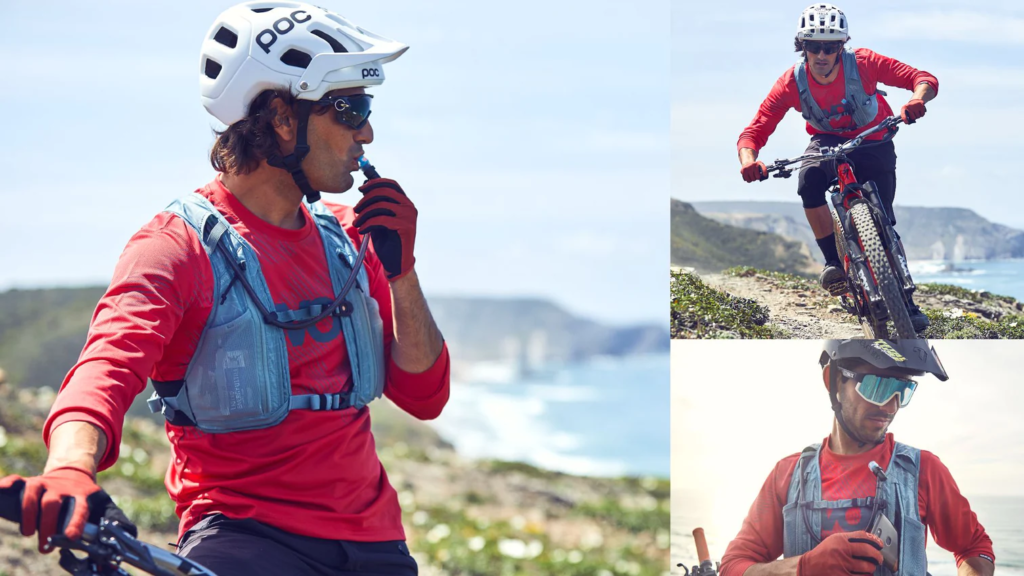
Key Point Summary of Choosing The Right Hydration Pack for Cyclists:
- Variety in Hydration Packs: Tailoring your choice to fit different cycling disciplines and ride durations. Mountain, gravel, and cyclocross biking, you got it!
- Comfort and Capacity Balance: Finding a hydration pack that won’t hinder your ride with unnecessary weight but still carries enough water.
- Extra Features for Enhanced Experience: Prioritizing additional features and durability for long-term use and convenience.
As a seasoned cyclist with over three decades of experience in mountain biking, gravel riding, and cyclocross, I’ve come to appreciate the nuances that make each ride enjoyable. One crucial aspect, especially for beginners and mid-level cyclists, is staying adequately hydrated. Let’s dive into how to select the perfect hydration pack, drawing on my years of experience and lessons learned along many trails.
Understanding the Variety in Hydration Packs
Choosing the right hydration pack for cyclists when the market is flooded with different types of hydration packs, each designed to cater to specific cycling needs. Here’s a closer look at what’s available:
- Minimalist Packs: Perfect for short, fast rides. These packs are lightweight, carrying between 1 to 1.5 liters, enough for about an hour of intense riding. They’re designed not to weigh you down or restrict your movement.
- Moderate Capacity Packs: These are versatile options, usually carrying about 2 to 3 liters. They are ideal for half-day rides or if you’re someone who prefers to have a little extra water just in case.
- All-Day Adventure Packs: With capacities upwards of 3 liters and additional storage compartments, these packs are designed for long or remote rides where you need to be self-sufficient. They can store extra layers, food, and basic bike repair tools.
Personal Anecdote:
I recall a particular day-long trail adventure where my moderate-capacity pack was the hero. It had enough water to last the entire ride and space for some trail mix, a spare tube, and a mini pump. The convenience of having everything in one place was invaluable.
Balancing Comfort and Capacity
The right pack should strike a balance between carrying enough water and not being a burden. Here’s what to consider:
- Fit and Comfort: Look for packs with adjustable straps and a design that suits your back’s shape. A well-fitting pack should feel snug but not restrictive. Remember, the way a pack fits can drastically change its feel when it’s full.
- Weight Distribution: A good pack distributes weight evenly. When filled, it shouldn’t sway or throw you off balance.
Personal Tip:
I learned the hard way that a poorly balanced pack can quickly lead to discomfort and even back pain. I once used a pack that sat too low on my back, leading to a sore lower back after just a few hours of riding.
Extra Features for Enhanced Experience
While the primary function of a hydration pack is to carry water, additional features can significantly enhance your ride.
- Storage Compartments: Handy for keeping tools, snacks, and personal items organized.
- Built-in Safety Features: Some packs come with integrated whistles and reflective materials for emergencies.
- Weather-Resistant Design: If you often ride in varying weather, look for a pack that’s water-resistant or comes with a rain cover.
Personal Experience:
There was an instance where I got caught in a sudden downpour. Thankfully, my hydration pack had a built-in rain cover, which protected not just the pack but also the essentials I was carrying.
Durability: A Worthwhile Investment
Investing in a high-quality hydration pack pays off in the long run. Look for durable materials and sturdy construction. A good pack withstands the wear and tear of cycling and offers longevity, saving you from frequent replacements.
Personal Insight:
Over the years, I’ve had a variety of packs. The more durable ones have not only lasted longer but have also maintained their comfort and functionality throughout their use.
Final Thoughts
Selecting the right hydration pack is about understanding your specific cycling needs, ensuring comfort and convenience, and considering the long-term value. For beginner and mid-level cyclists, this choice can significantly impact your riding experience. Remember, the right hydration pack not only carries your water but also enhances your ride, keeping you hydrated and prepared for whatever the trail or road throws at you.

When exploring the world of hydration packs for cycling, it’s essential to consider the top manufacturers known for their quality and innovation. These brands have consistently provided cyclists with reliable, functional, and comfortable hydration solutions, enhancing the riding experience across various cycling disciplines. Here are some of the standout manufacturers:
- CamelBak: Pioneers in hydration pack design, offering a wide range of options for all cycling styles.
- Osprey: Known for ergonomic and durable designs, ideal for long-distance and adventure cycling.
- Hydrapak: Offers versatile and user-friendly hydration solutions, favored for their flexibility and ease of use.
- Deuter: Provides robust and affordable hydration packs, balancing performance and budget.
- USWE: Specializes in bounce-free hydration packs, highly regarded for their stability and comfort during rigorous rides.
- EVOC Sports: Esteemed for their high-quality, innovative packs that combine functionality with modern style.
Indeed, at Cyclists Authority, we have rated and ranked a list of the Best Hydration Packs, specifically tailored to meet your cycling needs. Additionally, we provide a comprehensive Hydration Pack resource that guides you through selecting the perfect hydration solution, ensuring an optimal balance between capacity, comfort, and functionality for your rides.
FAQ’s
When should you use a hydration pack?
A hydration pack is particularly useful in scenarios where maintaining hydration is crucial but regular access to water is limited. Here are some common situations where a hydration pack is ideal:
- Long-Distance Running or Cycling: For endurance athletes, a hydration pack offers a convenient way to drink water without stopping. It’s especially handy in marathons, trail running, or long bike rides.
- Hiking and Backpacking: When you’re on a long hike or a backpacking trip, water sources might be scarce. A hydration pack allows you to carry a significant amount of water comfortably.
- Outdoor Sports and Activities: Sports like skiing, snowboarding, or mountain biking in remote areas can benefit from a hydration pack, as it allows easy access to water without interrupting the activity.
- Traveling in Hot Climates: If you’re traveling or working in hot climates where dehydration is a risk, a hydration pack ensures you have a steady water supply.
- Military or Tactical Use: In military exercises or tactical operations, staying hydrated while keeping hands free is crucial. A hydration pack is ideal in these scenarios.
- Music Festivals or Large Outdoor Events: In situations where you might be standing for long periods without easy access to water, like at a festival, a hydration pack can be very practical.
- Emergency Preparedness: For emergency kits, especially in areas prone to natural disasters where water supply might be cut off, having a hydration pack can be a lifesaver.
Remember, while hydration packs are extremely convenient, they also require regular cleaning to prevent the growth of bacteria and mold. It’s important to choose the right size and type of hydration pack for your specific activity and personal needs.
How should a hydration pack fit?
A hydration pack should fit comfortably and securely, ensuring it doesn’t shift or bounce during your ride. Here’s how it should fit:
- Snug but Comfortable: The pack should sit snugly against your back without feeling too tight or restrictive. It should contour to the shape of your back and shoulders.
- Adjustable Straps: Shoulder straps should be adjustable to ensure the pack sits high and close to your back. This positioning helps distribute weight evenly and prevents the pack from bouncing.
- Chest and Waist Straps: Many hydration packs come with chest and waist straps. These should be used to stabilize the pack, especially when it’s fully loaded. The chest strap should be tight enough to keep the pack in place but not so tight that it restricts breathing. The waist strap helps distribute weight to your hips, taking pressure off your shoulders.
- No Chafing or Rubbing: Ensure that no part of the pack or straps rub against your skin, as this can cause discomfort or chafing during long rides.
- Room for Movement: You should be able to move freely, including bending and twisting, without the pack hindering your movement.
- Appropriate Back Length: The length of the pack should match the length of your back. A pack that’s too long can sit too low, affecting balance and comfort.
Remember, the right fit will vary depending on the pack’s design and your body shape, so it’s worth trying on a few different models to see which one works best for you.
How do I choose a good hydration pack?
Choosing a good hydration pack involves considering several factors to ensure it meets your specific cycling needs and preferences. Here are the key aspects to look for:
- Capacity: Determine how much water you need for your rides. Hydration packs typically range from 1 to 3 liters. Shorter rides may only require a 1.5-liter pack, while longer or more intense rides, like mountain biking or long-distance touring, might necessitate a 2-liter or larger pack.
- Fit and Comfort: Look for a pack that fits well. It should sit snugly against your back and have adjustable straps for a custom fit. A well-fitting pack shouldn’t bounce or shift as you ride. Pay attention to padding and ventilation to ensure comfort, especially on longer rides.
- Storage Space: Consider what you need to carry besides water. If you plan to bring tools, spare tubes, snacks, or extra clothing, look for a pack with additional storage compartments.
- Weight: A lighter pack can make a significant difference, particularly on longer rides. However, don’t sacrifice essential features for weight alone.
- Material and Durability: Choose a pack made from high-quality, durable materials that can withstand wear and tear, especially if you’re into rougher cycling disciplines like mountain biking.
- Ease of Cleaning: Hydration bladders should be easy to clean and dry. Look for packs with wide openings, as they are easier to maintain.
- Type of Bladder and Bite Valve: The design of the bladder and bite valve is crucial for convenience. Look for a bite valve that’s easy to use and doesn’t leak, and a bladder that’s simple to fill and empty.
- Reflective Elements and Safety Features: For those who ride in low-light conditions, reflective elements are important for visibility. Some packs also come with safety features like built-in whistles.
- Personal Preferences: Consider any specific features you prefer, like a hydration pack with a magnetic tube trap, quick-release hoses, or specific designs that match your cycling attire.
- Price: Set a budget, but remember that investing in a quality hydration pack can enhance your riding experience and last longer.
- Reviews and Recommendations: Look at reviews and ask fellow cyclists for recommendations. They can provide valuable insights into the performance and durability of different hydration packs.
By carefully considering these factors, you can choose a hydration pack that not only keeps you hydrated but also supports your cycling adventures comfortably and effectively.
I hope this guide helps you find the perfect hydration pack to enhance your cycling experience. Remember, the right hydration solution can make a significant difference in your rides, keeping you comfortable and hydrated on any adventure. If you have any questions or need further advice, feel free to reach out.
Ride safe and stay hydrated!
John
